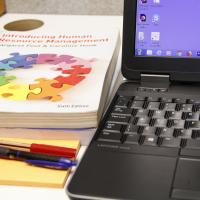
College of Nursing, Midwifery and Healthcare subject guide
Welcome video
Welcome to your subject guide for students of the College of Nursing, Midwifery and Healthcare. As a healthcare student you need to be able to effectively find and use relevant academic, professional and research information sources. The role of our subject librarians are to provide the resources and help develop the information literacy skills that you need.
Below are links to a range of such resources and video tutorials to help you use them effectively. There are discussions of key knowledge areas and also some practice exercises to make sure you are developing your knowledge and skills. Contact your subject librarians below if you need any help or advice. Emma is on-site at Reading and Sunny looks after Social Work.
- Email: sunny.birdy@uwl.ac.uk or kate.smith@uwl.ac.uk or emma.rees@uwl.ac.uk
- Phone: 020 8209 4470 or 020 8231 2706
- MS Teams: Search for Emma Rees or Sunny Birdy
The guide is in narrative form, so you can start at the beginning and work down to the end in sequence if you wish to get a complete overview of our resources, how to use them and how they relate to each other. Alternatively, select from the menu below.
What the Library can offer you
How can we help? Begin by watching our "library resources and information skills support for CNMH students" video to get an introduction to the resources and support we provide to help you make effective use of information resources in your assignments.
We have a wide range of material to support you both within the Paul Hamlyn Library, the Reading Library and via the Digital Library.
Log in to the digital resources with your student details (student ID number - your username - and personal password). If you are having trouble with your password, you can contact the IT department by visiting our IT Support page. Or, visit our setting your password page so you can register to reset your password yourself.
Where do I begin? Reading lists, ebooks and Libsearch
Begin with your module’s reading list. View our "using reading lists and e-books" tutorial showing you how to access, interpret and use it. Each module has a reading list which gives access to the books, articles and other items the teaching team would like you to read in order to engage properly with the learning material.
Reading lists can be found in each module’s Blackboard space but you can also search for your reading lists online either by module name or module code.
We try to make sure our reading lists allow you to understand the details and contexts of the area of professional practice the module concentrates on as thoroughly as possible. An important aspect of this is the cultural background that your patients and clients come from. The reading lists endeavour to cover an inclusive perspective, making sure you grasp how health and social care are experienced by all the communities of the UK. We are very open to suggestion of how we can increase this perspective. If you wish to recommend a resource, contact sunny.birdy@uwl.ac.uk.
Many reading lists recommend a wide selection of ebooks; this tutorial also shows how to use ebooks effectively.
Some recommended books are available only in print form. See below for a discussion of printed books, including how to locate them in the library.
Once you've looked through your reading list, you may wish to expand your reading or you may want to find some information on an idea that is new to you or you have limited information about. Use the library's search tool LibSearch to search a wider range of resources.
-
Printed books
To identify and locate books on your topic, begin with your module’s reading list and then expand your reading using LibSearch.
You will find that some titles are available as print copies only, some as ebooks only and some in both formats. LibSearch and your reading list will indicate the location of a printed book by giving its shelfmark, eg 610.73072 NUR. Find out how you use the shelfmark to find books on the library shelves via our library resources and e-resources page.
Most printed books on Nursing, Midwifery and Healthcare topics can be found on the 2nd floor of the Paul Hamlyn Library and the Reading Library under the class numbers below.
- 610.73 Nursing
- 610.73072 Nursing Research
- 612 Physiology
- 613 Health Promotion
- 614.44 Infection Prevention and Control
- 615 Pharmacology
616 Medical contexts and issues, including:
- 616.462 Diabetes
- 616.12 Heart Disease
- 616.025 Paramedic Science
- 616.028 Critical care
- 616.0754 History taking, clinical examination and diagnostic reasoning
- 616.89 Mental Health and Mental Health Nursing
- 617 Surgery and Operating Department Practice
- 618 Obstetrics and Midwifery
- 618.92 Child Health and Children's Nursing
There are books on Social Work at 361.3, Public Health and the Social contexts and determinants of health at 362.1 (3rd floor of Paul Hamlyn) and books on Nursing management and leadership at 362.173068.
The printed texts can be borrowed for one week but will automatically renew each week for the length of your course unless someone else requests them.
Ask the Customer Experience assistants (in blue shirts on the library floors and located at the front desk) if you need help in finding your books.
Transferring Books to Paragon and Between Libraries
If you wish to have texts transferred to Paragon 2nd floor to pick up from there or have a book transferred between libraries:
- Find the book through Libsearch (click "All Filters" to limit the result to "Catalogue Only")
- Find "Access Options" below the book's record
- Click "Access Catalogue Record"
- On the catalogue record, choose "Place Reservation" to the right.
- Log in using your personal details.
-
LibSearch
Once you’ve looked through your reading list, expand your reading with the Library's search tool LibSearch. It will allow you to investigate a wider range of resources quickly and simply and begin exploring your assignment topics in more detail. Watch our "using LibSearch to locate books, ebooks and other resources" video to find out more.
Based on simple but well-structured searches, it can find and allow you to access relevant ebooks, identify appropriate printed books and show where they are in the library. It can also find and allow you to access journal articles and a range of other useful documentation.
Key databases and specialist resources
LibSearch is useful if you want a general overview of your topic. However, to find a complete range of relevant research evidence from scholarly journals you must use the key research databases. Journals are weekly, monthly or quarterly publications that publish articles on specific topics, often describing research the authors have done.
Below are the key databases together with links to detailed video tutorials on how to use them effectively. Also included are additional specialist sources which may be of use if you are undertaking a major piece of work such as a dissertation or systematic review.
Many of these databases provide only the references and abstracts of the research papers and the other information sources they identify and not the full article. Towards the end of this section there is a tutorial on where to find the full text of research studies. There is another on how to use referencing management software to organise, manage and format the references you find.
Please note, you will need to log in with your student username and password for some of the links below:
-
Key databases
(This is a link to CINAHL. Use ‘Choose Databases’ to add Medline)
CINAHL is the main research database for Nursing, Midwifery, Public Health, Operating Department Practice and Paramedic Science. Medline is the principal worldwide scholarly and research resource in clinical medicine, including emergency care, surgery, epidemiology and obstetrics. It is advisable to search them together to obtain an adequate range of relevant sources.
- View our video tutorial for CINAHL and Medline.
Internurse is the UK’s largest collection of peer-reviewed nursing content, and home of the British Journal of Nursing. Internurse covers primary and secondary care settings as well as the whole spectrum of specialist nursing practice including cardiology, neuroscience, mental health, palliative care and wound care.
Maternity and Infant Care is an additional source of research evidence, news items and book chapters in topics of interest to midwives.
A video platform with videos covering the key issues facing health professionals involved in the care of pregnant women, women giving birth and newborns.
Database containing over 134,000 full-text peer-reviewed scholarly articles from the American Psychological Association (APA). Coverage includes clinical, health/social and industrial/organisational branches of psychology. You can add this database to a CINAHL and Medline search using "Choose Databases".
PsycINFO is an expansive abstracting and indexing database with more than three million records devoted to peer-reviewed literature in the behavioural sciences and mental health, making it an ideal discovery and linking tool for scholarly research in a host of disciplines. You can add this database to a CINAHL and Medline search using "Choose Databases".
Reference management software enables you to gather, manage, store and share references from your database searches. Log in or create an account by clicking the link above then get started by viewing our tutorial.
- View our Video tutorial for RefWorks.
Can be added to your CINAHL and Medline search (use "Choose Databases" once you have accessed CINAHL). It covers scholarly and research journals featuring a range of social contexts in which health issues occur.
Social Care Online is an extensive database of social care information. It contains research briefings, reports, legislation and government documents, journal article citations, evidence-based practice materials, service user knowledge and more than 600 links to social care websites. This is a key resource for Social Work students and practitioners.
A key resource for Social Work students, this essential database indexes UK academic journals, books and reports as well as grey literature sources such as semi-published reports, surveys and statistics on social work practice. featuring social care, community care, children and young people, families and parenting, older people, community health, homelessness, disability and special needs, crime and social inequalities.
- View our video tutorial for maternity and infant care, describing a search method that can be applied to social policy and practice
Content is divided into five key themes typically found on a social work course: communication skills, professionalism in practice ethics, values and diversity, assessment and intervention, lifecourse perspectives.
WestLaw UK full text legal information, grouped as cases, legislation, commentary, the EU and journals. In addition to full text sources there is the Legal Journals Index, which indexes and abstracts over 800 UK and international journals. As well as searching, you can browse (select from a list of contents) and search individual publications.
Secondary research evidence
Cochrane Database of Systematic Reviews
Cochrane is a database of systematic reviews of research. It is a leading source of secondary research evidence (reviews of several primary studies addressing the same research question).
- View our video tutorial for Cochrane
TRIP is a source of secondary evidence including systematic reviews and clinical guidelines from around the world.
- Search using Boolean operators AND OR and NOT
Specialist research databases
Embase is a medical database which emphasises biomedicine, health policy, psychiatry and genetics — a good complement to Medline for researchers.
It can be searched in the same way as CINAHL by selecting the "Multi-Field Search" option or via MeSH (Subject) Headings. Medline can also be searched using MeSH Headings.
Books, podcasts and videos to illustrate research methods along with a range of tools including method maps, project planners, reading lists and which statistics to use.
Scopus is the largest abstract and citation database, and one of the most widely used by researchers in health and social care. It includes peer-reviewed titles from international publishers, Open Access journals, conference proceedings, trade publications and quality web sources. Subject coverage: Health and Life Sciences; Social Sciences, Psychology, Biological Sciences.
You can search via basic Boolean AND, OR and NOT.
- Visit the Elsevier Support Center website for further advice
- Comprehensive guidance on searching Scopus and understanding its metrics
- Visit the Support for Research to see how the Library supports scholarly communication, bibliometrics/altmetrics analysis and open access
-
Specialist resources
PROSPERO is an international database of prospectively registered systematic reviews in health and social care, welfare, public health, education, crime, justice and international development, where there is a health-related outcome.
National Institute of Health Research
The Institute publishes its own fully searchable journals in which comprehensive accounts of its commissioned research can be obtained.
The ISRCTN registry is a primary clinical trial registry recognised by WHO and ICMJE. ISRCTN accepts all studies involving human subjects or populations with outcome measures assessing effects on human health and wellbeing, including studies in healthcare, social care, education, workplace safety and economic development.
Examples of grey literature include technical or research reports, doctoral dissertations, some conference papers and some official publications.
-
Locating the complete text and managing your search findings
Finding the full-text of a journal paper
A very brief tutorial on the possible sources of journal articles if the full text is not present.
Referencing Management Tool "RefWorks"
Store and properly format the references you find in databases.
Understanding research
As a health professional, you need to be able to find and apply the best research evidence to your practice, and as a student, within your assignments. But what are the different types of research and what kinds of questions and problems do the different methodologies investigate?
Research evidence is of two principal types, Primary (from a single study) and Secondary (synthesised from several studies tackling the same question). This is generated through two different paradigms, Qualitative and Quantitative, which have their own corresponding approaches and methods. The increasingly practiced 'Mixed Methods' research combines both paradigms.
Research studies approach research questions differently based on what kind of question it is. Does it ask how effective medication or change of practice is (known as a quantitative approach)? Or perhaps it wants to know what it's like to be a patient or healthcare professional under certain circumstances (a qualitative approach)?
-
Primary Research Evidence
Primary Research Evidence is the outcome of a research study. Researchers address a research question or problem by selecting an appropriate ‘methodology’, whose understanding of what knowledge is, and how it can be obtained, is used to create a research design. They use this design to seek out the data to answer the question in a way that minimises potential distortions and biases. Researchers usually publish their findings as conference reports or journal articles/papers. The ‘abstracts’ of these publications, which can be found in databases such as CINAHL, contain details of the question, design, results and conclusions.
-
Secondary Research Evidence
Secondary Research Evidence is the synthesis of several studies addressing the same research question (eg Systematic Reviews or Clinical Guidelines). Because they are based on several different studies and checked for the quality and appropriateness of their design, secondary sources of evidence are regarded as higher quality evidence, especially if they are 'systematic' in their methods. There are databases of systematic reviews such as Cochrane, and clinical guidelines can be found through the TRIP database — see above.
-
Qualitative Research
Qualitative Research investigates experiences of different aspects of our lives ('phenomena'). What are the experiences of a patient with a particular illness or a health professional in a particular work context? If we can interpret such experiences, we can understand and potentially improve them. There are several different qualitative methodologies.
Phenomenology tries to find the nature of the unique experiences specific to, for example, a critical care nurse. Phenomenography investigates the variation in those experiences and how they relate to each other.
Ethnography investigates how the members of a community or workplace interact and experience their roles as part of a team, ward or hospital.
Grounded Theory begins without preconceptions; exactly what are the significant experiences in the workplace that make it what it is, or perhaps need to be changed?
Qualitative studies are often interview or observation-based, and the categorised descriptions of experiences are presented as ‘themes’.
-
Quantitative Research
Quantitative Research investigates the effectiveness of changes in practice or other ‘interventions’ such as medications, or differences in health background and context. Such studies can be categorised as observational where there is no interference in what happens and experimental where there is.
Surveys are common examples of observational studies. The researcher observes what is happening or asks questions, placing the observation or answer under several predetermined categories and then statistically analysing the frequency of observation or response.
Other observational studies are 'retrospective', looking back in time to understand current outcomes. Studies of this type include Case-Control studies which compare patients who have a disease with patients who do not (controls) and look back to compare the exposure to a risk factor to determine its relationship to the disease.
In contrast, some studies are prospective and follow the research subjects forward in time. Cohort studies that follow a group over a period of time to see how its exposure to possible risk factors affects its outcomes when compared to the general population are examples of prospective studies.
Randomised Controlled Trials, however, are experimental studies. They ask, 'how effective is a medication or other intervention?' by conducting an experiment. Participants are randomly assigned to two groups; one receives the intervention, and one doesn't. What is the statistical difference in outcome; is it wide enough to 'prove' the intervention is effective?
-
Mixed Methods Research
Mixed Methods Research makes use of both paradigms. They are often applied 'sequentially' — the findings of a quantitative approach to the research question then informs a qualitative approach. For example, the results of a survey are used to develop questions for semi-structured interviews.
- Log in to the VLeBooks website to view Nursing and Healthcare Research at a Glance, which will give more detail on research methodologies and research designs in healthcare.
Finding the research evidence
Below are tutorials that focus in-depth on finding research evidence in particular professional contexts.
They use tools such as PICO and PICo. The PICO (Population, Intervention, Comparison Outcome) and PICO (Population, phenomenon of Interest, COntext) tools allow us to capture a research question’s essential elements. These can then be expanded to construct effective search strategies. The video tutorials show you how to do this, how to apply the strategies in the databases and how to begin the process of critiquing what you find.
-
Analysing questions using PICO (Quantitative)
Quantitative questions attempt to analyse how effective intervention, a difference in personal health context or a change in practice is, if at all.
‘How effective is cognitive behaviour therapy in treating teenagers with eating disorders?’
- P: Population - teenagers with eating disorders
- I: Intervention - cognitive behaviour therapy
- C: Comparison - none
- O: Outcome - managed/reduced eating problems/ healthy diet
Outline search (tip: separate out the ‘who’ and ‘what’ of the population)
- Teenagers
- AND Eating disorders
- AND Cognitive behaviour therapy
- AND Reduced eating problems
Expanded search (add synonyms — words that express the same idea, acronyms — initialled versions, examples and alternative spellings)
- Teenagers OR adolescents
- AND Eating disorders OR Bulimia OR Anorexia
- AND Cognitive behaviour therapy OR CBT
- AND Reduced eating problems OR managed eating problems OR healthy diet
A non-intervention example, in which the population have a different health context:
‘In infants born prematurely, compared to those born at full term, what is the subsequent lifetime prevalence of sensory deafness?’
- P: Population/patient - infants
- I: Intervention/Indicator - premature
- C: Comparator/control - full-term
- O: Outcome - sensory deafness
Outline search
- Infants
- AND Premature
- AND Full-term
- AND Sensory deafness
-
Analysing questions Using PICo (Qualitative)
Qualitative questions seek to discover experiences, opinions and reactions to a phenomenon.
‘What are nurses' experiences in caring for patients with Parkinson's disease?’
- P: Population - nurses
- I: phenomenon of Interest - experiences of caring
- CO: Context - Parkinson's disease
Outline search (tip: separate ‘experiences’ - OR opinions OR reactions - from that which is being experienced)
- Nurses
- AND Experiences
- AND Caring
- AND Parkinson's disease
Another example:
‘What are the experiences of being counselled of women with depression who have cancer?’
- P: Population - women with depression
- I: phenomenon of Interest - experiences of being counselled
- CO: Context - Cancer
Outline search
- Women
- AND Depression
- AND Experiences
- AND Counselling
- AND Cancer
-
Finding the evidence for Nursing and Nursing Associate Practice
- View our "introduction to finding evidence for nurses and nursing associates" video to find out more about the evidence for Nursing and Nursing Associate Practice
This tutorial shows you how to obtain evidence to answer a research question in Nursing and Nursing Associate practice. It discusses the principles of analysing a question and formulating and conducting a search for primary and secondary research evidence, as well as the basics of appraisal.
There is a tutorial specifically for Assessment 1 of the BNursing Level 4 module:
There is a similar tutorial for the equivalent module in the Nursing Associate course:
Level 5:
This tutorial develops further the role of searching for research evidence in evidence-based practice. It is specifically for those studying the Level 5 (2nd year) module NS50116X: Evaluating Evidence for Translation into Nursing Practice.
Level 6:
See below for a tutorial on finding the evidence for dissertations.
-
Finding the research evidence in Midwifery
This tutorial shows you how to obtain evidence to answer a research question in Midwifery practice. It discusses the principles of analysing a question and formulating and conducting a search for primary and secondary research evidence, as well as the basics of appraisal. See below for a tutorial on finding the evidence for dissertations.
-
Finding the evidence for Operating Department Practice
- View our "introduction to finding evidence for ODPs" video to find out more about finding the evidence for Operating Department Practice
This video tutorial discusses and demonstrates how to find research evidence for Operating Department Practice. See below for a tutorial on finding the evidence for dissertations.
-
Finding the evidence for Paramedic Practice
- View our introduction to "finding evidence for paramedic practice" video.
This video tutorial discusses and demonstrates how to find research evidence for Paramedic practice. See below for a tutorial on finding the evidence for dissertations.
-
Finding the Evidence for Public Health
This video tutorial discusses and demonstrates how to find research evidence for Public Health. See below for a tutorial on finding the evidence for dissertations.
Critical information literacy
- View our "critical information literacy" video to find out more about critical information literacy for the health promoting professional
Do you know where information comes from? Who creates it? How does information find its way into the public domain? Which authors are published, and which aren’t, and who decides this? Do prominent professional organisations exclude unpopular opinions? Is all research 'reliable? What is ‘good’ and ‘bad ‘research?
Linked above is a brief narrated presentation on 'Critical Information Literacy' to help you think about these issues as you find information sources for patients and families as a health-promoting professional.
Finding resources for dissertations and systematic reviews
Below are a range of resources and skills tutorials for those who are undertaking a substantial piece of work such as a dissertation, thesis or systematic review, in which detailed and comprehensive searching of the research and professional literature is required. These build on the ‘Finding the research evidence’ tutorials listed above.
-
More advanced searching for dissertations and systematic reviews for publication
This tutorial gives detailed instruction and analysis of the detailed literature searching strategies required for Systematic Reviews. The methods shown are appropriate whether the review is self-contained or part of a thesis or dissertation.
-
Searching Medline and Embase using subject headings
This tutorial shows you how to search databases using subject headings, particularly useful tools for those attempting dissertations and systematic reviews. This search method uses the expertise of the databases indexers to make sure that your result is comprehensive and complete.
Embase is a medical database which emphasises biomedicine, health policy and genetics — a good complement to Medline for researchers.
-
Doing a systematic review: the basics
This covers the key characteristics and processes of systematic reviewing.
-
Useful books
How to do a systematic literature review in nursing: a step-by-step guide
Handbook of Meta-Analysis is a useful guide if your review makes use of this form of synthesis.
-
Theses and dissertations
Doctoral Theses at the University of West London
The theses of successful UWL doctoral candidates are available through the UWL Repository.
British Library theses (formerly EThOS)
The main British Library catalogue now provides access to digital doctoral theses held in UK institutional repositories. To access these documents, search for a thesis and then click on a title of interest to view the full details for that work. TOnhe link can be found under the section labelled "View line - External Resource Available" (in green) just above the "I want this" section (in red) at the bottom of the page.
Open Dissertations is an open-access database built to assist researchers in locating both historic and contemporary dissertations and theses. It contains records (some with links to full text) for more than 800,000 electronic theses and dissertations from around the world.
If the dissertation you require is not open access, please request an inter-library loan — find out more via our your Library account, borrowing and renewals page.
Analysis of search results and critical appraisal
Once you have completed your search of the databases, you must begin the process of analysis. This has two stages:
- Determining which papers might be relevant sources of evidence
- Determining the quality and value of the evidence, so that only the best and most appropriate is applied within your piece of written work or the clinical environment; a process known as 'Critical Appraisal'
The first of these can be completed through analysis of each paper's title and abstract as given in the database. The second requires an appraisal of the complete paper using tools such as CASP checklists.
-
Determining which papers might be relevant sources of evidence
Look through your search results. Select those which might be relevant by looking at each paper's title and abstract and selecting those which provide positive responses to the following questions.
1. Do the study's aims and objectives match your research question?
2. Who are the subjects/participants? If they are patients, are they in the right age group or gender, do they have the relevant condition? If health professionals, are they the relevant profession; do they work in the setting you're focusing on?
3. Is the intervention/change (quantitative) or phenomenon (qualitative) the one you are analysing?
4. What is the study's methodology and research design and is it the right one to answer your question? Don't forget that qualitative studies will analyse experience and opinions and have results which are thematic; quantitative ones will have statistical results.
5. Is the size of the sample significant enough? (eg three participants may not be enough, but may be okay if it's a phenomenological study)
6. Where was the research was undertaken? Research in the UK isn't necessarily published in UK journals. Is the NHS mentioned, or a UK location?
Many of these factors may only be clear from the full paper (eg where the researchers are based will give a clue to where the research was done). Make the best judgement you can at this stage.
-
Determining the quality and value of the evidence
Download the full paper from the database if available. Obtain the full text of any papers not immediately available from other sources (view our "finding the full text of a journal paper" video).
Appraise each paper using a CASP appraisal checklist appropriate to its methodology. The Critical Appraisal Skills Programme (CASP) has developed a set of eight critical appraisal tools; they are free to download.
Each CASP checklist is specific to a methodology. However, each is based on the following standard appraisal questions:
1. Was there a clear statement of the aims of the research?
2. Is the methodology the correct one for the kind of evidence the study hoped to find?
3. Was the research design appropriate to address the aims of the research?
4. Was the recruitment strategy appropriate to the aims of the research? Was sampling of sufficient size and unbiased?
5. Was the data collected in a way that addressed the research question?
6. Has the relationship between researcher and participants been adequately considered for bias?
7. Have ethical issues been taken into consideration? Was ethical clearance obtained through appropriate organisations?
8. Was the data analysis sufficiently rigorous? Was it insightful and unbiased? Is there an in-depth description of the analysis process?
9. Is there a clear statement of findings? Is there adequate discussion of the evidence both for and against the researcher’s arguments?
10. How valuable is the research? Does the researcher discuss the contribution the study makes to existing knowledge or understanding?
-
Books to read
- The book "A beginner's guide to evidence-based practice in health and social care" is a good place to start for critical thinking, critical writing and critical appraisal.
- The excellent book, "How to Read a Paper" by Professor Tricia Greenhalgh gives a broader analysis.
- How to read and critique research : a guide for nursing and healthcare students / Helen Aveyard.
-
PRISMA flow-chart
A PRISMA flowchart can be downloaded from the PRISMA website. It allows you to record the steps involved from your initial literature search to the final selection of research papers and reviews. Add it as an appendix to your assignment or within the body of your review if required to do so in assessment guidelines.
Citation and referencing
When writing assignments, you need to acknowledge your use of another author's ideas so that you:
- Give the original author credit
- Support your arguments
- Enable the reader to find your sources
- Prove to your lecturer that you have read around the subject
- Avoid accusations of plagiarism
Accurate referencing will help you avoid accusations of plagiarism and possible loss of marks. Plagiarism is presenting someone else’s work or ideas as your own by incorporating it into your work without full acknowledgement.
There are two video tutorials (available on Panopto) on how to cite (in the text) and reference your sources correctly.
- View our Harvard Referencing (citing your sources in your work) video
- View our Harvard Referencing (creating your reference list) video
Watch them carefully and contact me with any follow-up questions or draft reference lists. Access the comprehensive database, Cite Them Right, for further guidance, especially on more unusual source types.
Please find a text version of the guidance below or download the document.
-
Why should I reference?
When writing assignments, you need to acknowledge use of another author's ideas so that you:
- Give the original author credit
- Support your arguments and make your assignment more academic
- Enable the reader to find your sources
- Prove to your lecturer that you have read around the subject
Accurate referencing will help you avoid accusations of plagiarism and possible loss of marks
See below for some basic examples of appropriate referencing styles for common sources of information. If your information source cannot be found below, visit the Cite them Right website and use the search box to locate the correct format.
-
Citing in the text of your work
As well as providing a full reference in the reference list, you must cite in the text of your work the place you have used information or quoted from.
Points to remember:
- Format: surname (publication year) or (surname, publication year), eg Jones (2018) or (Jones, 2018). The author can be inside or outside the bracket depending on how you are using the source. See below for which option to choose.
- Where should the citation go? The reference can be at the beginning or within/at the end of the sentence. See below for which option to choose.
- More than one author: If your source has more than one author make sure you express this in the right way (see below).
- If no individual author is identified, the 'author' is the organisation responsible for the document or website (eg NICE).
- No date? (NICE, no date)
- Several sources for the same idea: If the information is from several sources, separate by semicolons (Jones, 2020; Smith and Johnson, 2018) in declining date order.
- Two or more references with the same author(s) and the same publication year: distinguish them like this: (NICE, 2019a; NICE, 2019b; NICE, 2019c).
- Can/should I repeat the citation? Yes, if you are using the source at a later point. Also if you think it may not be clear after a few sentences that you are still using information from the same source. But don't overdo it!
- Quotation: If you quote, use single speech marks around the quote and add the page number if there is one. Keep quoting to a minimum.
- In-text citation should match the corresponding reference (authors and publication year) in the reference list.
One author, two authors, three authors, more...
In the example below the point about diet has been made by several sources: with one author, two authors, three authors and more than three authors respectively.
One author: (Smith, 2013) or Smith (2013)
Two authors: (Smith and Jones, 2006) or Smith and Jones (2006)
Three authors: (Smith, Jones and Adams, 2009) or Smith, Jones and Adams (2009)
Four or more authors: (Smith et al., 2003) or Smith et al. (2003) but list all the authors in the Reference List
Two ways of including the citation
If you are discussing the literature and need to compare authors and their contributions. The author is outside the bracket:
Bosman (2013) believes knowledge of the A&P of the respiratory system is important for clinical professionals.
Or:
If you are just using the information without reviewing the literature. The author is inside the bracket:
Understanding the A&P of the respiratory system is important in this context (Bosman, 2013).
Understanding the A&P of the respiratory system is important (Bosman, 2013) in this context.
Page numbers
You must include page numbers (and single speech marks) if you are quoting from your source:
'A solid understanding of the anatomy and physiology of the respiratory system is essential' (Bosman, 2013, p.5).
You can include page numbers if you are summarising a point made on a particular page but not quoting. This is good practice but not an essential requirement.
Secondary Citation
If you wish to cite a source in your work that the author you are reading has cited, you can do it in the format:
Smith's views on public health practice (Smith, 2010, cited in Arthurs, 2015) support the idea...
Where Arthurs is the source you've read and Smith is the source that Arthurs is discussing. If you use a quote from the original source use 'quoted in' rather than 'cited in'. You must NOT list the original source (Smith) in your Reference list.
-
Creating your reference list
Each type of resource has a slightly different style
Pick the correct template from those below which match your information sources.
Remember:
- The list should be a single list in alphabetical order (see bottom of this column for an example)
- Include online details for journal articles in the correct format (see below)
- Don't reference the same source twice
- Don't include page numbers unless specified by the template
- If you have two or more references with the same author(s) and publication year then distinguish them like this: (NICE, 2019a; NICE, 2019b; NICE, 2019c)
- List all the authors. Don't use et al. in the Reference List
-
Books
Surname, Initial. (Year of publication) Title in italics. Edition (if not the 1st). Place of publication: publisher.
Abraham, S. and Johnson, B.D. (2008) Eating disorders. 6th edn. Oxford: Oxford University Press.
Don't forget to note and reproduce the punctuation! (commas, brackets, colons, etc)
Note — Things are different when there are:
Three authors: Smith, K.D., Jones, B. and Adams, T.G.
More than three authors: list them all (separated by commas) with 'and' between the last two.
Important note: College of Nursing, Midwifery and Healthcare students must include all authors in the reference list.
No personal author — use the organisation, eg NICE, RCN.
The book is ‘edited’ (see below)
It doesn’t matter if the book is online unless accessed via a book reader, in which case add — Available at:
Edited books
Each chapter has its own author(s)
Ramsey, R. and Holloway, F. (2009) 'Mental health services', in Davies, T. and Craig, T. (eds) ABC of Mental Health. Chichester: BMJ Books, pp.23-27.
- The chapter title needs single speech marks. the title of the book requires italics.
For chapters in edited books, you need to reference the chapter as well as the book itself. Ramsey and Holloway are the chapter authors, and are used in text. The in-text reference would be: Ramsey and Holloway (2009). Davies and Craig are the book editors. The page numbers refer to the first and last page of the chapter.
-
Journal articles
Surname, Initial. (Year of publication) 'Title of article surrounded by single quotes', Name of Journal in italics, volume (issue), page range preceded by two 'p's.
Åkerlind, G.S. (2005) 'Academic Growth and Development: How Do University Academics Experience It?', Journal of Higher Education, 50(1), pp.1-32.
If the article is online, add at the end:
For example:
Available at: https://doi.org/10.1080/1755182X.2010.523145
if the article has a doi (digital object identifier)
Or, for example:
Available at: http://www.jstor.org/stable/44376239 (Accessed: 27 May 2022).
if there is no doi, but you downloaded it from a website.
Things are different when there are:
Three authors: Smith, K.D. , Jones, B. and Adams, T.G.
More than three authors: list them all (separated by commas) with 'and' between the last two.
Important note: College of Nursing, Midwifery and Healthcare students must include all authors in the reference list.
-
Referencing clinical guidelines, reports and other sources
- Name of organisation (Year )Title in italics. Available at: URL (Accessed: Date downloaded).
- Use (2015, updated 2019) when updated but not a new edition.
National Institute for Health and Care Excellence (NICE) (2018) Post-traumatic stress disorder (NG116). Available at: https://www.nice.org.uk/guidance/ng116 (Accessed: 2 December 2022)
In Text: National Institute for Health and Care Excellence (NICE) (2018) the first time, then NICE (2018) thereafter
Systematic Review
Lemos, A., Amorim, M.M.R., Dornelas de Andrade, A., de Souza, A.I., Cabral Filho, J.E. and Correia, J.B. (2017, updated 2019) 'Pushing/bearing down methods for the second stage of labour', Cochrane Database of Systematic Reviews, 2, CD011123. Available at: www.ovid.com (Accessed: 25 September 2022).
'2' is the issue number, 'CD011123' is the article number, if either are available.
Webpages
BBC (2016) Scientists claim pesticides are linked to bee decline. Available at: http://www.bbc.co.uk/news/science-environment-37099809 (Accessed: 19 August 2019).
NHS Trust Guidelines (these will need a certain degree of anonymity)
Local NHS Trust (2014) Care of women in active labour (GL944) [Internal Publication].
Classroom Presentation
University of West London (2020) 'Week 4: Leadership Styles' [PowerPoint Presentation]. NS40050X Accountability and professional leadership in nursing practice. Available at: https://online.uwl.ac.uk/bbcswebv/pid-9 (Accessed: 26 February 2022)
Online Videos
Clinical Videos (2019) How the digestive system works. 2020. Available at: http://www.youtube.com/watch?v=J9fhjceIggCU (Accessed: 23 January 2021)
Act of Parliament
Health and Social Care Act 2012, c. 7. Available at: www.legislation.gov.uk/ukpga/2012/7/contents/enacted (Accessed: 12 October 2022).
'c.7' refers to 'chapter 7' which means this is the 7th piece of legislation passed in the year. The Act should show this as part of its title.
In text:
Recent legislation (Health and Social Care Act 2012) shows that...
-
An example Reference List
- BBC (2009) Young resent negative images. Available at: http://news.bbc.co.uk/1/hi/education/7820245.stm (Accessed: 10 July 2019).
- Cameron, S. (2009) The business student's handbook: skills for study and employment. 5th edn. Harlow: Financial Times Prentice Hall.
- Department of Health (2008) Health inequalities: progress and next steps. Available at: http://www.dh.gov.uk/en/Publicationsandstatistics/Publications/DH_085307 (Accessed: 18 June 2020).
- Fisher, A. (2011) Critical thinking: an introduction. 2nd edn. Cambridge: Cambridge University Press.
- Health and Social Care Act 2012, c. 7. Available at: http://www.legislation.gov.uk/ukpga/2012/7/contents/enacted (Accessed: 12 June 2018).
- Mavrommati, G., Bithas, K. and Panayiotidis, P. (2013) ‘Operationalizing sustainability in urban coastal systems: a system dynamics analysis’, Water Research, 47(20), pp. 7235-7250.
- Mid Staffordshire NHS Foundation Trust (2013) Report of the Mid Staffordshire NHS Foundation Trust Public Inquiry. Available at: http://webarchive.nationalarchives.gov.uk/20150407084003/ (Accessed: 27 March 2017).
- Nursing and Midwifery Council (NMC) (2018) The code: standards of conduct, performance and ethics for nurses and midwives. Available at: https://www.nmc.org.uk/standards/code/ (Accessed: 18 November 2019).
- Pears, R. A. and Shields, G. (2016) Cite them right: the essential referencing guide. 10th edn. Basingstoke: Palgrave Macmillan.
- Thomas, G., Martin, R., and Riggio, R. (2013) ‘Leading groups: Leadership as a group process’, Group Processes and Intergroup Relations GPIR, 16(1), pp.3-11.
Get access to NHS resources
As a healthcare student at the University of West London, you are entitled to access to the Core Content electronic resources provided by the NHS for the duration of your course. This is in addition to the electronic resources provided by UWL itself and is separately administered by means of an Open Athens account. The resources include additional databases and journals.
If you are eligible for an Athens account, you will receive an email from the account administrator which will include your username and a link to activate your account. You must activate your account within 30 days of receiving this email.
To activate your account, click on the link in the email and fill in the required fields to create and then confirm your new password.
Once you have activated your account, you can access Open Athens. Type: University of West London in the ‘Find your institution’ search box; click the ‘University of West London’ link that appears below and then enter your username and password when prompted.
If you have any questions or problems relating to your Athens account, please contact emma.rees@uwl.ac.uk (Open Athens Administrator).
E-Learning for Healthcare
E-Learning for Healthcare (e-LfH) is run by Health Education England and provides online training modules for health and social care staff in a wide range of subjects. You can register for e-Learning for Healthcare via Open Athens.
After you log in to Athens, select e-Learning for Healthcare from the resources menu.
Practice exercises
Below are some exercises to help you to get familiar with searching for information using the Library resources. Other exercises can be found in the Referencing and ‘Finding the Evidence’ video tutorials.
-
LibSearch
As we have discussed above, LibSearch is available from the Library homepage and allows you to search for information on your keywords that has been published in journals, books, reports, etc. It is important to be confident in using the "All filters" tool to enable you to narrow down the results to the most useful ones to read.
If you need to, have a look at the "using LibSearch to locate books, e-books and other resources" video again on the best ways to search LibSearch.
Use the below steps to search LibSearch and answer the questions below:
Search for: "infection control” AND hospital AND COVID-19
Use the filters menu to narrow down to:
date range last 12 months
academic journals (under "All Filters" then "Source Type")
Questions:
Who wrote the article "Infection control of COVID-19 in pediatric tertiary care hospitals: challenges and implications for future pandemics"?
What year was it published?
What journal was it published in?
-
Ebooks
Ebooks are accessible via LibSearch.
The best way to find them is to:
- Search for keywords that describe your topic, for example: "Infection control: applied microbiology for healthcare"
- Within the "All Filters" option, narrow down to:
- E-book
- Full Text Online
- Limit your search by date (last 12 months, last 3 years) to find only the most recently published books
When you have found a book to read, you have the option to read it online. Be sure to sign out of the book once you have finished looking at it.
Questions:
- How many pages can you copy of the book? (Hint: this information is on the page before you "read online")
- Does this book mention the alcohol-based hand rub (ABHR) ingredient isopropanol? (Hint: use the "search within book" search box)
-
Journals
Journals are incredibly rich in content and you will find them useful for your course throughout your studies. Journals are weekly, monthly or quarterly publications that publish articles on specific topics, often describing research the authors have done. The Library subscribes to thousands, so it is important to be able to find the relevant ones for you. You can search in LibSearch or specialist databases like CINAHL for articles on particular topics. If you are looking for a specific journal, you can search LibSearch by entering its title.
Use the below steps for journals and answer the questions below:
Enter into LibSearch the title of the journal you are looking for, for example British Journal of Nursing
Look at the date range that is available for the journal
Questions:
What is the oldest year that is available for British Journal of Nursing?"
Open the journal and browse to 2021. How many issues were published that year?












